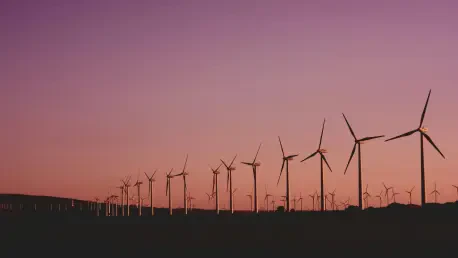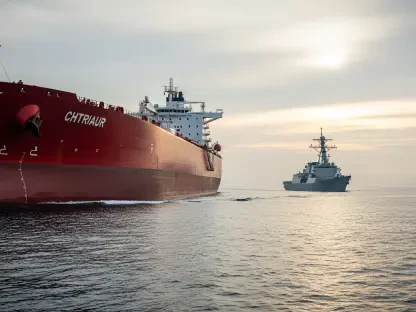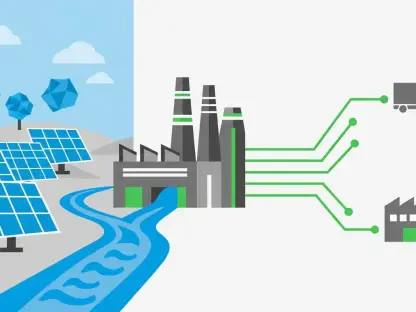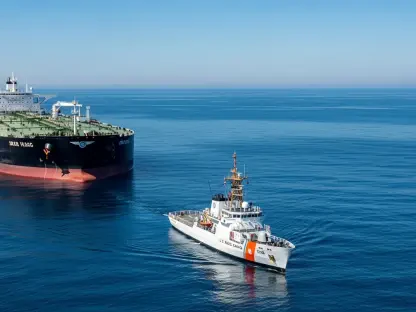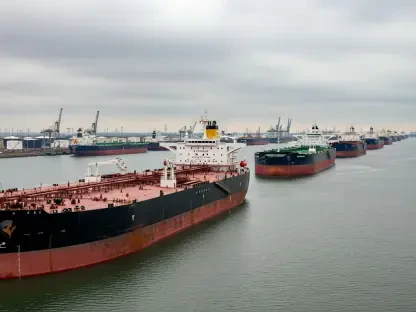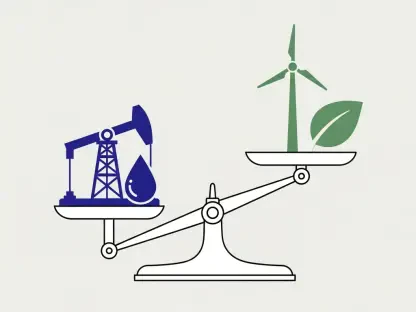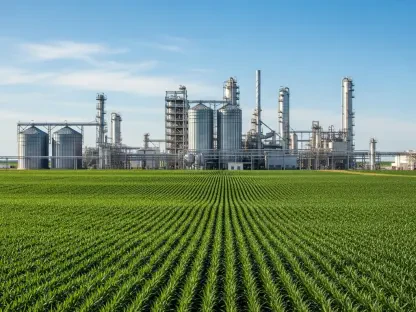In the relentless pursuit of sustainable energy solutions, wind power has emerged as a cornerstone of global efforts to curb greenhouse gas emissions, with wind turbines growing in size and wind farms becoming increasingly compact to maximize output. This evolution, while promising, brings to light a critical challenge: the complex behavior of wind turbine wakes, those downstream regions of reduced velocity and heightened turbulence that can significantly diminish the performance and durability of turbines positioned further along the line. These wakes are not mere aftereffects but dynamic phenomena shaped by multiple factors, chief among them being free-stream turbulence (FST)—the inherent turbulence in the incoming wind flow influenced by atmospheric conditions or upstream turbine interactions. FST varies in both intensity and scale, creating a multifaceted environment that complicates the prediction of wake evolution over significant distances. Alongside FST, the turbine’s thrust coefficient (CT), which measures the force exerted on the flow, plays a pivotal role in determining wake characteristics. Delving into this intricate interplay offers vital insights for optimizing wind farm layouts, ensuring that energy extraction is maximized while minimizing structural wear. This exploration seeks to unravel how FST, in tandem with CT, influences wake recovery, structure, and long-range dynamics, shedding light on both immediate and far-reaching impacts for the wind energy sector.
Decoding the Role of Free-Stream Turbulence
Unpacking the Nature of FST
Free-stream turbulence represents the natural turbulent fluctuations present in the wind before it encounters a turbine, characterized by two primary attributes: intensity, expressed as a percentage of velocity fluctuations relative to the mean flow, and integral length scale (ILS), which quantifies the size of turbulent eddies within the stream. Intensity is a direct indicator of how much chaotic energy exists in the flow, influencing the degree of mixing that occurs once the wind passes through a turbine. High-intensity free-stream turbulence tends to stir the wake more vigorously, promoting a quicker blending of the low-momentum wake with the surrounding higher-speed flow. This mixing is fundamental to understanding how rapidly a wake dissipates, which in turn affects downstream turbine efficiency. Moreover, the variability in free-stream turbulence intensity across different environments—ranging from calm offshore settings to chaotic onshore terrains—necessitates a nuanced approach to wake modeling. Without accounting for these differences, predictions about wake behavior risk being inaccurate, potentially leading to suboptimal turbine placements in wind farms.
The integral length scale, while less discussed, is equally crucial as it determines how turbulent structures interact with the wake itself. Larger eddies, indicative of a greater integral length scale, may not integrate well with the smaller-scale turbulence generated by the turbine, often leading to slower mixing and delayed wake recovery. This counterintuitive effect highlights that turbulence is not just about strength but also about structure, with larger scales sometimes acting as a barrier to efficient energy exchange. Such dynamics are particularly relevant in environments where atmospheric conditions create significant variations in eddy sizes, such as over open water where stable conditions prevail. Recognizing the dual impact of intensity and scale in free-stream turbulence provides a more comprehensive framework for anticipating wake behavior, ultimately guiding better design and operational strategies for wind energy systems.
Origins of Turbulence in Wind Farm Settings
In the context of wind farms, FST often originates from the atmospheric boundary layer, a region of the atmosphere influenced by surface features like terrain, vegetation, and human structures, which introduce varying levels of turbulence into the wind flow. Onshore wind farms frequently encounter higher FST intensity due to the rough, irregular landscapes that disrupt smooth airflow, creating chaotic eddies that interact with turbine wakes. This heightened turbulence can accelerate wake mixing but also poses challenges in predicting consistent wake patterns due to the variability in terrain-driven effects. Factors such as hills, forests, or urban areas further amplify these disturbances, making onshore sites a complex environment for wake analysis. Addressing these site-specific influences is essential for tailoring wind farm layouts to local conditions, ensuring that wake interference does not unduly compromise energy output.
Offshore wind farms, by contrast, typically experience lower FST intensity owing to the smoother surface of water, which reduces frictional disruptions in the airflow, yet they often face larger integral length scales due to the stable atmospheric conditions over vast, open expanses. These larger eddies can result in slower wake recovery, as they struggle to mix effectively with the turbine-generated turbulence, potentially extending the downstream impact of wakes. Additionally, the presence of upstream turbines in densely packed wind farms adds another layer of complexity, as their wakes contribute to the FST encountered by downstream units, creating a cascading effect of turbulence. This interconnectedness underscores the importance of considering both natural and turbine-induced sources of FST when planning wind farm configurations, as overlooking these factors could lead to underestimated wake effects and reduced overall efficiency.
Analyzing FST Effects on Wake Evolution
Recovery Patterns in the Near Wake
Within the near wake, spanning up to approximately 7 rotor diameters downstream, the influence of FST intensity on wake recovery is pronounced, primarily through its ability to enhance turbulent mixing between the low-velocity wake and the surrounding free stream. Elevated FST intensity accelerates the reduction of velocity deficits, allowing the wake to dissipate more quickly as turbulent fluctuations facilitate a rapid exchange of momentum. This effect is particularly beneficial in densely packed wind farms, where faster recovery can minimize power losses for downstream turbines. The broadening of wake width under high FST intensity also plays a role, as it disperses the region of reduced velocity over a larger area, potentially reducing the concentrated impact on subsequent turbines. Such dynamics are critical for understanding how closely turbines can be spaced without significant performance degradation, especially in environments with naturally high turbulence levels.
However, the integral length scale (ILS) of freestream turbulence (FST) introduces a layer of complexity to near-wake recovery that cannot be ignored. When the ILS is large, indicating the presence of bigger turbulent eddies in the incoming flow, the mixing process can be hindered, as these eddies may not interact efficiently with the smaller-scale structures within the wake. This delay in recovery contrasts with the benefits of high intensity, revealing that the structural characteristics of turbulence are just as influential as its strength. In practical terms, this means that wind farms in areas with large-scale turbulence, such as certain offshore regions, might experience prolonged near-wake effects, necessitating greater spacing between turbines to avoid efficiency losses. These findings emphasize the need for wake models to incorporate both intensity and scale parameters to accurately predict near-field behavior and inform farm design.
Long-Range Recovery in the Far Wake
In the far wake, extending beyond 15 rotor diameters downstream, the recovery trends under high FST intensity reveal unexpected patterns that challenge conventional assumptions about wake expansion, and these findings are critical for understanding turbine interactions. Unlike the near wake, where growth and mixing are enhanced by turbulence, the far wake exhibits a notable slowdown in width growth, with a plateau emerging as turbulent diffusion reaches its limit. This behavior suggests that once the initial mixing driven by FST is exhausted, further expansion of the wake becomes constrained, even in highly turbulent conditions. Such a finding is pivotal for wind farm planning, as it implies that the downstream reach of wakes may not extend as far as linear growth models predict, potentially allowing for tighter configurations in turbulent environments if other factors like meandering are managed effectively.
Moreover, velocity deficits in the far wake persist longer than anticipated, even as turbulence levels return to background conditions under high FST influence. This decoupling of momentum recovery from turbulence dissipation indicates that downstream turbines may continue to experience reduced wind speeds, impacting power output, long after turbulent stresses have diminished. The spatial shift of the growth plateau—occurring closer to the turbine as FST intensity increases—further complicates long-range predictions, as the point at which wake expansion stabilizes varies with ambient conditions. These observations highlight the importance of extending wake studies beyond traditional near-field limits to capture these far-field dynamics, ensuring that wind farm designs account for prolonged velocity impacts and adjust spacing strategies accordingly to optimize energy capture.
FST Influence on Turbulence Kinetic Energy
Spatial Distribution of TKE Across the Wake
Turbulence kinetic energy (TKE) within a wind turbine wake reaches its peak in the near-field tip shear layer, a region characterized by steep velocity gradients where the rotating blades interact with the incoming flow, generating intense turbulent activity. High free-stream turbulence (FST) intensity significantly amplifies these TKE peaks, as ambient turbulence compounds the shear-driven energy created by the turbine, resulting in a highly chaotic zone immediately downstream. This concentration of TKE is a key determinant of the wake’s initial structure, influencing how quickly coherent structures like tip vortices break down and disperse. For wind farm operators, recognizing the location and magnitude of these peaks is essential, as they indicate areas of maximum turbulent stress that could affect nearby turbines, potentially accelerating wear on critical components if not adequately addressed through design or spacing.
The thrust coefficient (CT) further shapes the distribution of Turbulent Kinetic Energy (TKE) by enhancing shear strength at higher values, leading to more turbulent wakes in the near field as the turbine extracts greater energy from the flow. This relationship directly ties operational settings to turbulence levels, offering a potential lever for managing wake impacts through adjustments in turbine performance parameters. However, as the wake progresses downstream, the influence of CT on TKE diminishes under high freestream turbulence (FST) conditions, with ambient turbulence often dominating the energy profile by around 15 rotor diameters. This rapid dissipation of TKE—returning to background levels much sooner than momentum recovery—underscores a critical asymmetry in wake evolution, where energy dissipation outpaces structural recovery. Such insights are vital for predicting the downstream environment, as they suggest that while turbulence may subside, other wake effects linger, necessitating a balanced approach to wind farm layout planning.
Downstream Consequences of TKE Dynamics
The swift dissipation of TKE under high FST intensity carries significant implications for downstream turbines, primarily by reducing the turbulence-induced mechanical stress they might otherwise endure. As TKE levels normalize to background conditions relatively early in the far wake, often by 15 rotor diameters, the risk of fatigue damage from turbulent fluctuations diminishes, potentially extending the lifespan of turbine components in highly turbulent settings. This reduction in stress could inform maintenance schedules, allowing operators to focus resources on other performance factors rather than frequent repairs driven by turbulence loads. However, this benefit must be weighed against other wake effects, as the persistence of velocity deficits continues to challenge optimal energy extraction, even in the absence of high turbulence.
Despite the alleviation of turbulence stress, the lingering velocity deficits in the far wake—unaccompanied by elevated TKE—still pose a substantial barrier to downstream power output, as turbines operate in a flow with reduced kinetic energy availability. This mismatch between TKE and momentum recovery suggests that power losses may be a more enduring concern than structural wear in turbulent environments, prompting a reevaluation of how wake impacts are prioritized in wind farm design. Understanding the quicker normalization of TKE compared to velocity recovery enables more accurate forecasting of downstream performance, helping to tailor turbine spacing and operational strategies to mitigate energy losses. By integrating these dynamics into planning, wind farm efficiency can be enhanced, balancing the dual challenges of power reduction and equipment durability in varied turbulence conditions.
Broader Implications for Wind Farm Design
Optimizing Turbine Spacing Under FST Influence
The nuanced effects of free-stream turbulence on wake behavior, particularly the far-field reduction in wake growth under high FST intensity, suggest potential opportunities for optimizing turbine spacing in wind farms located in turbulent environments. As wake width expansion plateaus further downstream, the spatial extent of wake interference may be less severe than traditional linear models predict, implying that turbines could be positioned closer together without incurring significant power losses due to overlapping wakes. This possibility is particularly relevant for onshore sites or densely packed arrays where high ambient turbulence is common, potentially allowing for greater energy density per unit area. However, this advantage must be carefully balanced against the risk of amplified wake meandering, which can increase lateral displacement and offset the benefits of reduced wake growth, necessitating advanced modeling to predict these motions accurately.
Incorporating the scale of turbulence, as measured by the integral length scale, further refines spacing strategies, as larger eddies can delay wake recovery and extend downstream impacts, even in high-intensity conditions. In environments with significant ILS variations—such as offshore farms with stable atmospheric profiles—greater spacing may still be required to account for slower mixing and prolonged velocity deficits. These considerations highlight the importance of site-specific data in wind farm planning, ensuring that layouts are tailored to local FST characteristics rather than relying on generalized assumptions. By leveraging detailed experimental insights into FST effects, wind farm designers can develop more adaptive configurations, maximizing energy output while minimizing wake-induced inefficiencies across diverse environmental contexts.
Mitigating Structural and Performance Impacts
The rapid dissipation of turbulence kinetic energy under high FST conditions offers a potential reprieve for downstream turbines, as reduced TKE levels in the far wake translate to lower fatigue loads on structural components, possibly decreasing maintenance frequency and costs. This dynamic could influence material selection and turbine design, prioritizing resilience against velocity deficits over turbulence-driven stress in turbulent settings. For instance, in wind farms located in areas with consistently high FST, operators might focus on optimizing blade aerodynamics for lower wind speeds rather than reinforcing structures against turbulent buffeting. Such strategic adjustments could enhance long-term durability and reduce operational downtime, providing a cost-effective approach to managing wake effects in challenging environments.
Nevertheless, the persistence of velocity deficits long after TKE normalizes remains a critical concern for energy production, as downstream turbines continue to operate in a diminished flow field, directly impacting power generation efficiency. Addressing this challenge requires innovative solutions, such as advanced control systems that dynamically adjust upstream turbine operations to minimize wake strength based on real-time FST measurements. Additionally, integrating far-wake data into predictive models ensures that power output forecasts account for prolonged momentum deficits, enabling better grid planning and energy yield estimations. These steps, grounded in a deep understanding of FST-driven wake dynamics, pave the way for more resilient and productive wind farms, capable of navigating the complex interplay of turbulence and turbine performance over extended distances.
Reflections on Wake Dynamics Research
Bridging Turbine Wakes with Fluid Dynamics Principles
Exploring the parallels between wind turbine wakes and those generated by bluff bodies, such as cylinders or porous discs, has illuminated shared principles of fluid dynamics that transcend specific geometries, offering a broader perspective on wake behavior under free-stream turbulence. Similar patterns of entrainment, turbulence dissipation, and far-field growth suppression observed in both turbine and bluff-body studies suggest a universal response to free-stream turbulence that can enrich wake modeling approaches. This convergence indicates that insights from simpler flow configurations could be adapted to refine predictions for complex turbine wakes, potentially accelerating the development of more accurate engineering tools. By recognizing these commonalities, researchers can foster cross-disciplinary collaboration, leveraging established bluff-body research to address unique challenges in wind energy applications and enhance the theoretical foundation of wake studies.
The identification of wake meandering mechanisms, driven by shear-layer instabilities akin to vortex shedding in bluff-body flows, further underscores the value of these comparisons, linking turbine wake dynamics to fundamental flow instabilities. In low FST conditions, meandering remains closely tied to turbine-specific parameters like thrust coefficient, mirroring controlled bluff-body responses, while high FST introduces ambient eddy-driven motions that parallel atmospheric influences on simpler geometries. This dual mechanism framework, supported by consistent Strouhal number ranges across flow types, provides a robust anchor for integrating turbine wake behavior into the wider field of fluid dynamics. Such integration not only deepens the understanding of wake evolution but also encourages the adoption of universal metrics and models that can be applied across diverse wake-generating systems.
Advancing Experimental Insights into FST Effects
Experimental research conducted in high-Reynolds-number wind tunnels has proven instrumental in dissecting the intricate effects of free-stream turbulence on turbine wakes, offering controlled settings to isolate variables like FST intensity and integral length scale across a wide parametric range. These studies, often employing active turbulence grids to replicate real-world conditions from calm offshore to turbulent onshore environments, have validated theoretical predictions with empirical data, mapping out how FST shapes wake recovery, structure, and meandering over distances up to 20 rotor diameters. The comprehensive datasets generated from such experiments, covering numerous combinations of turbulence and thrust coefficient settings, have provided a solid foundation for developing data-driven design tools, ensuring that wind farm configurations are informed by realistic wake behaviors rather than oversimplified assumptions.
Beyond validation, these experimental efforts have uncovered novel far-wake trends, such as the suppression of growth rates under high FST intensity, which had previously been underexplored due to the focus on near-field dynamics in shorter studies. This extended view into long-range wake evolution has reshaped perspectives on wake persistence, highlighting the need for models to account for streamwise variations and the decoupling of turbulence kinetic energy from momentum recovery. As a result, the push for continued experimental exploration remains strong, with future studies likely to focus on even broader ranges of FST conditions and turbine interactions to capture the full spectrum of wake impacts. These advancements in experimental methodology and data collection stand as a testament to the field’s commitment to refining wind energy systems through rigorous scientific inquiry.
Future Pathways for Wind Energy Optimization
Innovating Wake Models for Turbulent Environments
Looking back, the journey to understand the influence of free-stream turbulence on wind turbine wakes has yielded transformative insights, particularly through detailed experimental studies that mapped out recovery patterns and turbulence dynamics over extended distances. Past research confirmed that high free-stream turbulence (FST) intensity hastened near-wake recovery while revealing unexpected far-field growth suppression, challenging the linear assumptions embedded in earlier models. These findings underscored the necessity of integrating both turbulence intensity and scale into predictive frameworks, as overlooking either could skew spacing and performance forecasts. The recognition of wake meandering’s dual mechanisms—shear-driven in calm conditions and eddy-driven in turbulent ones—further refined the understanding of lateral wake motions, ensuring that past models evolved to reflect real-world complexities. Reflecting on these developments, it’s evident that historical data laid a critical foundation for addressing wake interference in varied environmental contexts.
Moving forward, the focus should pivot toward developing adaptive wake models that dynamically incorporate site-specific FST characteristics, ensuring predictions remain accurate across diverse wind farm settings. Leveraging machine learning and real-time turbulence data could enable these models to adjust to changing conditions, offering precise guidance on turbine spacing and operational settings. Collaborative efforts between fluid dynamics experts and wind energy engineers promise to bridge remaining gaps, drawing from universal wake physics to craft tools that anticipate both near- and far-wake behaviors. By prioritizing such innovations, the wind energy sector can enhance farm efficiency, mitigating power losses and structural impacts through tailored designs that respond to the intricate dance of turbulence and turbine wakes.
Enhancing Operational Strategies with FST Insights
Reflecting on earlier investigations, the impact of free-stream turbulence on turbine wakes was meticulously documented through parametric studies that explored thrust coefficient interactions and long-range wake evolution up to 20 rotor diameters. These efforts revealed that while higher thrust coefficients deepened initial velocity deficits, their influence diminished under intense free-stream turbulence, with ambient turbulence often overriding operational effects in far-field regions. The rapid dissipation of turbulent kinetic energy compared to momentum recovery emerged as a defining characteristic, altering expectations for downstream turbine loads and performance. Historical experiments also highlighted the counterintuitive role of the integral length scale, where larger eddies delayed mixing, extending wake impacts under certain conditions. These past revelations provided a clearer picture of how ambient conditions shape wake dynamics, guiding initial steps toward more informed wind farm configurations.
As a next step, operational strategies should harness these FST insights by implementing real-time monitoring systems to adjust turbine settings based on incoming turbulence levels, potentially reducing wake strength during high-intensity periods. Exploring variable thrust coefficient controls could further minimize near-wake deficits in low-turbulence scenarios, preserving downstream flow for optimal energy capture. Additionally, site selection processes must prioritize detailed turbulence profiling to identify locations with favorable intensity and scale combinations, minimizing recovery delays and meandering risks. By embedding these actionable measures into wind farm management, the industry can move toward sustainable growth, ensuring that each turbine operates within an environment optimized for both output and longevity amidst the ever-present challenge of turbulent flows.
